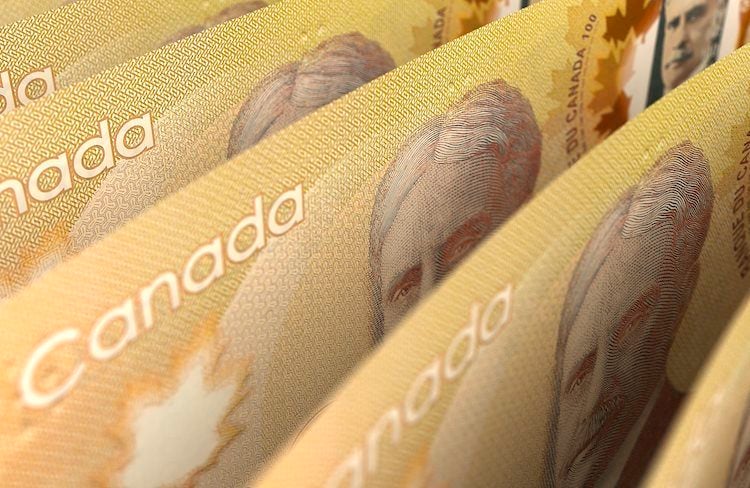- US positive labor market data was initially bearish on the USD, but the currency recovered losses.
- The ISM Manufacturing PMI came in weaker than expected, suggesting a contraction in the manufacturing sector.
- Canadian Dollar remains under pressure due to rate cut expectations.
The USD/CAD currency pair saw a mild decline in Friday’s session, reaching a low of 1.3920. Positive labor market data in the United States, including a steady Unemployment Rate and rising Average Hourly Earnings, initially weighed on the USD, but the currency later recovered its losses. A weaker-than-expected ISM Manufacturing PMI also influenced market sentiment.
Additionally, expectations of further interest rate cuts by the Bank of Canada (BoC) continue to exert downward pressure on the Canadian Dollar.
Daily digest market movers: Canadian Dollar mildly declined after mixed US data
- Nonfarm Payrolls in the US rose by 12,000 in October, missing the market expectation of 113,000 by a wide margin.
- The Unemployment Rate remained steady at 4.1% as expected, while Average Hourly Earnings rose expectedly by 4.0%.
- The immediate effect of the labor market data was bearish on the US Dollar, while it recovered all intraday losses.
- The ISM Manufacturing PMI for October has come in surprisingly weak, declining to 46.5 compared to expectations of 47.6.
- Rising expectations of more interest rate cuts by the BoC continue to weigh on the CAD.
- The BoC has already reduced its key borrowing rates by 125 basis points to 3.75% this year.
USD/CAD technical outlook: Bulls start to give up, consolidation coming
The Relative Strength Index (RSI) is in the overbought area with a value of 76, however, the RSIhas formed a declining slope. This suggests that buying pressure is declining, similar to the direction given by the lower green bars of the Moving Average Convergence Divergence (MACD).
Supports: 1.3870, 1.3850, 1.3830, Resistances: 1.3930, 1.3950, 1.3980.
Canadian Dollar FAQs
The key factors driving the Canadian Dollar (CAD) are the level of interest rates set by the Bank of Canada (BoC), the price of Oil, Canada’s largest export, the health of its economy, inflation and the Trade Balance, which is the difference between the value of Canada’s exports versus its imports. Other factors include market sentiment – whether investors are taking on more risky assets (risk-on) or seeking safe-havens (risk-off) – with risk-on being CAD-positive. As its largest trading partner, the health of the US economy is also a key factor influencing the Canadian Dollar.
The Bank of Canada (BoC) has a significant influence on the Canadian Dollar by setting the level of interest rates that banks can lend to one another. This influences the level of interest rates for everyone. The main goal of the BoC is to maintain inflation at 1-3% by adjusting interest rates up or down. Relatively higher interest rates tend to be positive for the CAD. The Bank of Canada can also use quantitative easing and tightening to influence credit conditions, with the former CAD-negative and the latter CAD-positive.
The price of Oil is a key factor impacting the value of the Canadian Dollar. Petroleum is Canada’s biggest export, so Oil price tends to have an immediate impact on the CAD value. Generally, if Oil price rises CAD also goes up, as aggregate demand for the currency increases. The opposite is the case if the price of Oil falls. Higher Oil prices also tend to result in a greater likelihood of a positive Trade Balance, which is also supportive of the CAD.
While inflation had always traditionally been thought of as a negative factor for a currency since it lowers the value of money, the opposite has actually been the case in modern times with the relaxation of cross-border capital controls. Higher inflation tends to lead central banks to put up interest rates which attracts more capital inflows from global investors seeking a lucrative place to keep their money. This increases demand for the local currency, which in Canada’s case is the Canadian Dollar.
Macroeconomic data releases gauge the health of the economy and can have an impact on the Canadian Dollar. Indicators such as GDP, Manufacturing and Services PMIs, employment, and consumer sentiment surveys can all influence the direction of the CAD. A strong economy is good for the Canadian Dollar. Not only does it attract more foreign investment but it may encourage the Bank of Canada to put up interest rates, leading to a stronger currency. If economic data is weak, however, the CAD is likely to fall.













